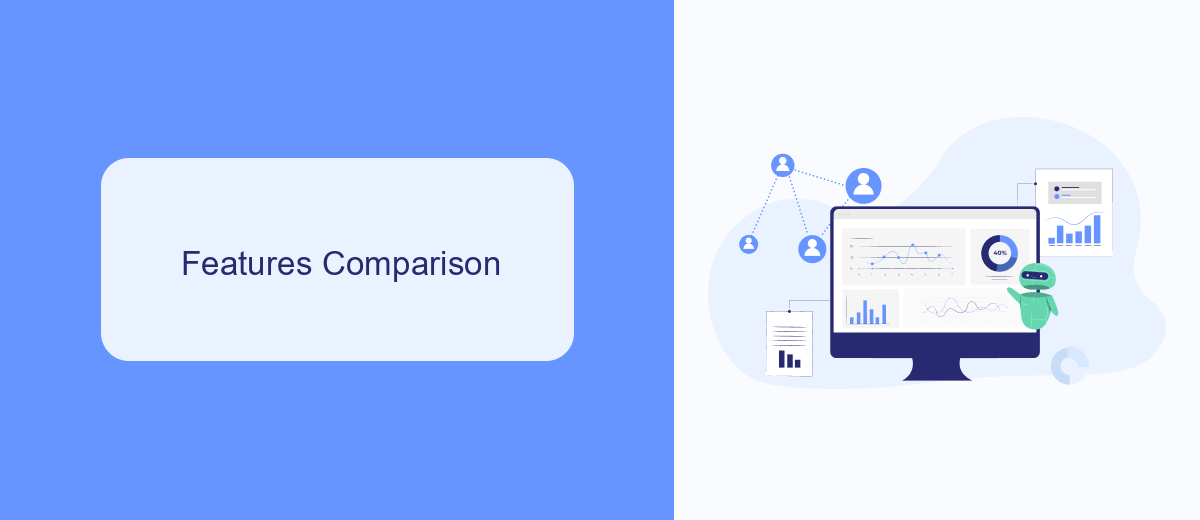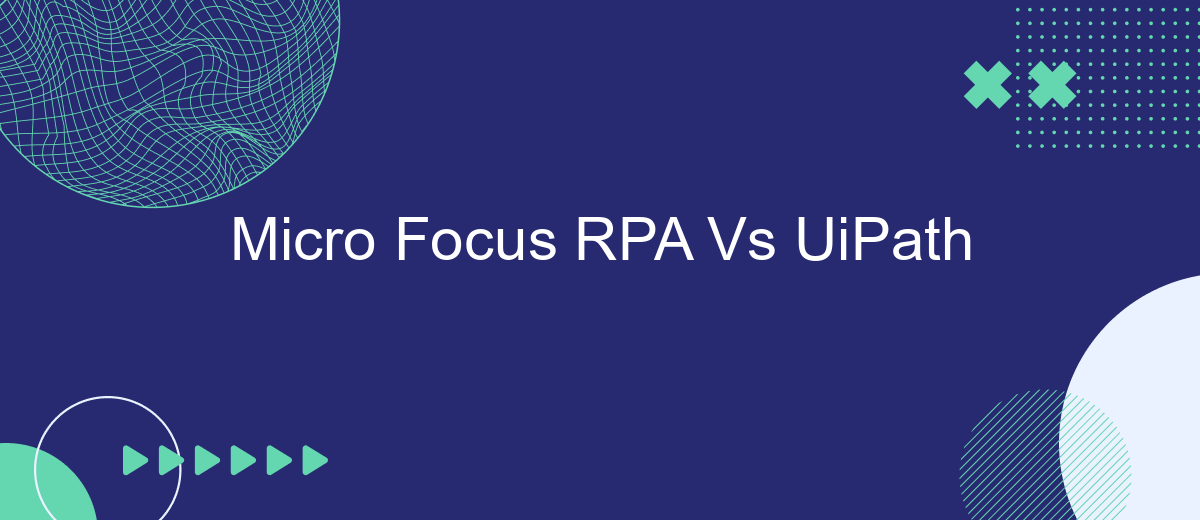In the rapidly evolving world of Robotic Process Automation (RPA), choosing the right platform is crucial for optimizing business processes. This article delves into a comparative analysis of two leading RPA tools: Micro Focus RPA and UiPath. By examining their features, capabilities, and user experiences, we aim to provide valuable insights to help organizations make an informed decision.
Introduction
Robotic Process Automation (RPA) has become a cornerstone for businesses aiming to streamline their processes and improve efficiency. Two prominent players in the RPA market are Micro Focus RPA and UiPath. Both offer robust solutions, but they cater to different needs and preferences, making it crucial to understand their distinct features and capabilities.
- Micro Focus RPA: Known for its strong integration with existing IT infrastructure and comprehensive security features.
- UiPath: Popular for its user-friendly interface and extensive community support, making it accessible for both beginners and experts.
When evaluating these two RPA tools, it's important to consider factors such as ease of use, integration capabilities, and support services. For instance, integration services like SaveMyLeads can significantly enhance the efficiency of these RPA tools by automating data transfer between various applications, ensuring seamless workflows. Understanding these aspects will help businesses make an informed decision that aligns with their operational needs and strategic goals.
Features Comparison

When comparing Micro Focus RPA and UiPath, one of the key differences lies in their approach to integration. UiPath offers extensive out-of-the-box integrations with various third-party applications, making it easier for businesses to connect their systems. Micro Focus RPA, on the other hand, focuses on providing robust APIs that allow for more customized integration solutions. For businesses looking to streamline their integration processes, tools like SaveMyLeads can be invaluable, as they offer automated lead transfer between multiple platforms, enhancing the overall efficiency of the RPA solutions.
Another critical aspect is the user interface and ease of use. UiPath is known for its intuitive drag-and-drop interface that simplifies the automation process for users with minimal technical expertise. Micro Focus RPA, while powerful, tends to have a steeper learning curve, requiring more technical knowledge to fully leverage its capabilities. Both platforms offer extensive documentation and support, but UiPath's community and ecosystem are larger, providing more resources for troubleshooting and learning.
Pricing

When comparing the pricing models of Micro Focus RPA and UiPath, it's essential to consider the different factors that influence the overall cost. Both platforms offer flexible pricing structures to accommodate various business needs, but there are some key differences to note.
- Micro Focus RPA: Micro Focus RPA typically offers a subscription-based model with tiered pricing. This allows businesses to scale their usage based on the number of bots and features required. Additionally, Micro Focus provides custom pricing for enterprises with specific needs.
- UiPath: UiPath also follows a subscription-based pricing model, offering various plans such as Community, Pro, and Enterprise. Each plan includes different levels of access to features and support. UiPath's pricing is designed to be scalable, making it suitable for both small businesses and large enterprises.
Both platforms offer free trials, allowing users to test the software before committing to a subscription. Additionally, businesses can leverage integration services like SaveMyLeads to streamline their automation processes, potentially reducing the overall cost and complexity of implementation. It's crucial to evaluate the specific needs of your organization and compare the pricing models to determine which solution offers the best value.
Pros and Cons

Choosing between Micro Focus RPA and UiPath can be challenging as both offer robust automation solutions. Micro Focus RPA is known for its strong integration with enterprise systems and a high level of security. On the other hand, UiPath is praised for its user-friendly interface and extensive community support.
When considering integration capabilities, both platforms offer various options. However, UiPath's extensive marketplace and third-party integrations, including services like SaveMyLeads, make it easier to connect with various applications and streamline workflows.
- Micro Focus RPA Pros: Strong enterprise integration, high security, scalable solutions.
- Micro Focus RPA Cons: Steeper learning curve, higher cost.
- UiPath Pros: User-friendly interface, extensive community support, wide range of integrations.
- UiPath Cons: May require additional customization for complex tasks, potential higher costs for advanced features.
Ultimately, the choice between Micro Focus RPA and UiPath depends on your specific needs and existing infrastructure. For those prioritizing ease of use and community resources, UiPath might be the better option. Conversely, enterprises with stringent security requirements and complex systems might prefer Micro Focus RPA.
Conclusion
In conclusion, both Micro Focus RPA and UiPath offer robust solutions for automating business processes, each with its unique strengths. Micro Focus RPA stands out with its strong security features and seamless integration with existing IT infrastructure, making it an excellent choice for organizations with complex environments. On the other hand, UiPath excels in ease of use and a rich set of features that cater to a wide range of automation needs, from simple tasks to complex workflows.
When choosing between Micro Focus RPA and UiPath, it's essential to consider your organization's specific requirements and existing infrastructure. Additionally, leveraging services like SaveMyLeads can significantly enhance the integration process, ensuring smooth and efficient connectivity between various applications and systems. Ultimately, the right choice will depend on the unique needs and goals of your business, but both platforms offer powerful tools to drive digital transformation and operational efficiency.
- Automate the work with leads from the Facebook advertising account
- Empower with integrations and instant transfer of leads
- Don't spend money on developers or integrators
- Save time by automating routine tasks
FAQ
What are the core differences between Micro Focus RPA and UiPath?
Which platform is more suitable for small to medium-sized businesses?
How do the pricing models of Micro Focus RPA and UiPath compare?
Can both platforms integrate with third-party applications?
Which platform offers better customer support and community resources?
Personalized responses to new clients from Facebook/Instagram. Receiving data on new orders in real time. Prompt delivery of information to all employees who are involved in lead processing. All this can be done automatically. With the SaveMyLeads service, you will be able to easily create integrations for Facebook Lead Ads and implement automation. Set up the integration once and let it do the chores every day.

